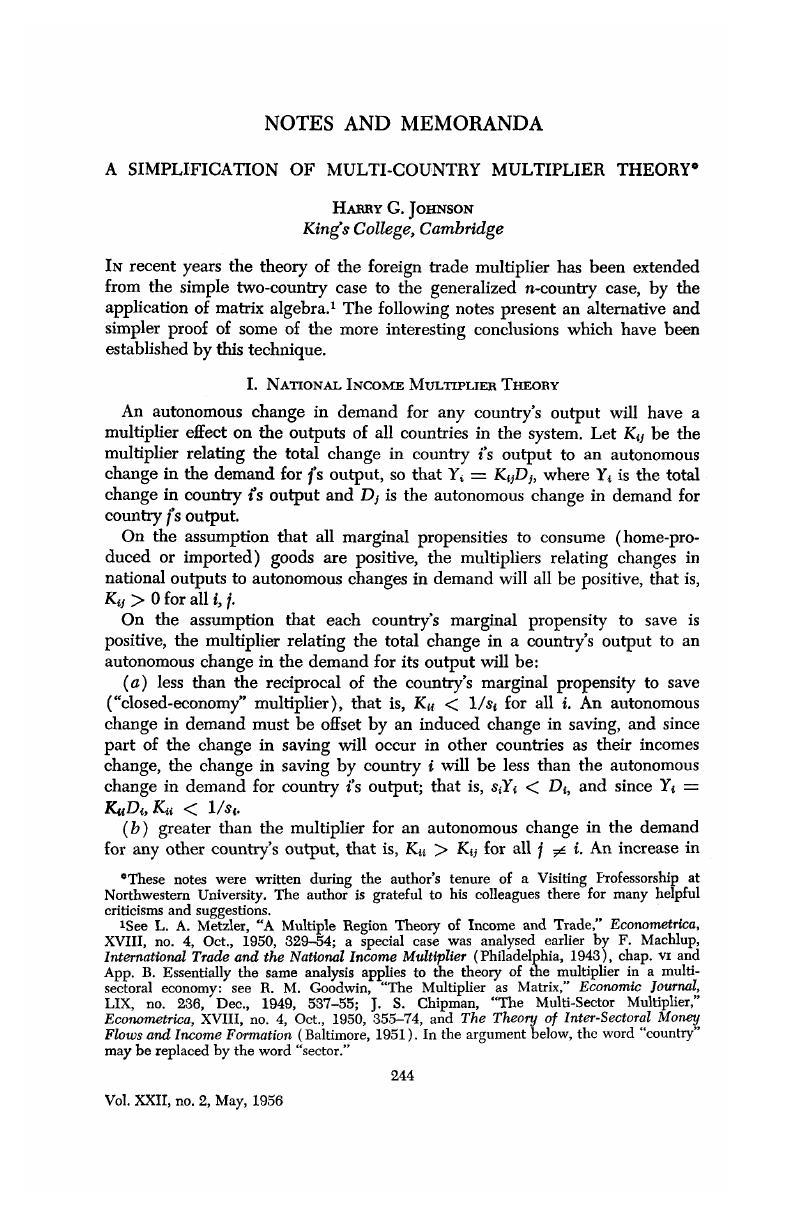Published online by Cambridge University Press: 07 November 2014

These notes were written during the author's tenure of a Visiting Professorship at Northwestern University. The author is grateful to his colleagues there for many helpful criticisms and suggestions.
1 See Metzler, L. A., “A Multiple Region Theory of Income and Trade,” Econometrica, XVIII, no. 4, 10, 1950, 329–54CrossRefGoogle Scholar; a special case was analysed earlier by Machlup, F., International Trade and the National Income Multiplier (Philadelphia, 1943), chap, VI and App. B.Google Scholar Essentially the same analysis applies to the theory of the multiplier in a multi-sectoral economy: see Goodwin, R. M., “The Multiplier as Matrix,” Economic Journal, LIX, no. 236, 12, 1949, 537–55CrossRefGoogle Scholar; Chipman, J. S., “The Multi-Sector Multiplier,” Econometrica, XVIII, no. 4, 10, 1950, 355–74CrossRefGoogle Scholar, and The Theory of Inter-Sectoral Money Flows and Income Formation (Baltimore, 1951).Google Scholar In the argument below, the word “country” may be replaced by the word “sector.”